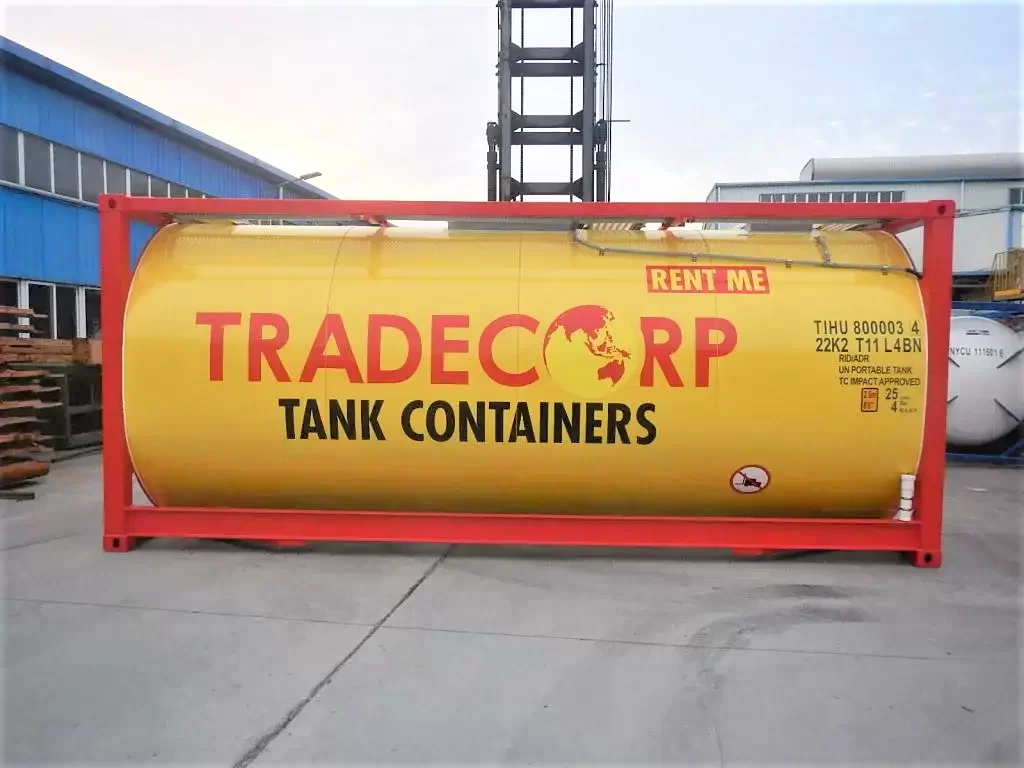ISO tank containers are specialized containers designed to efficiently and safely transport bulk liquids and gasses. These containers are standardized according to the International Organization for Standardization (ISO) regulations, which ensure their compatibility with transport infrastructure.
ISO tank containers are versatile and can be used to transport a wide variety of liquids and gasses, including chemicals, food products, fuels, and other hazardous materials. In this article, we will explore the different types of ISO tank containers and their uses in various industries.
20’ T50 Gas Tank
The 20ft T50 Gas Tank container is a specialized shipping container designed for the safe and efficient transportation and storage of various gasses, including propane and butane. This container is built to meet strict standards and regulations, ensuring the safe transportation of liquefied gasses without any leaks or accidents. It is constructed from high-quality vessel materials that can withstand the pressure and weight of the gas, providing a reliable and robust solution for gas transportation.
The Tradecorp T50 gas tank container is equipped with several features, such as a manlid, safety relief valve, gas line, liquid line, pressure gauge, thermometer, and level gauge. The container has been certified ISO (1161), making it compatible with transportation infrastructure. Moreover, this container can also be equipped with additional accessories, such as a level gauge, internal zinc coating, etc. With a capacity of up to 24,600 liters, the Tradecorp T50 gas tank is an efficient and versatile solution for transporting bulk liquids and gasses in industries such as oil and gas, chemical manufacturing, and energy production, where safe and reliable gas transportation is essential.

20′ T75 Cryogenic Tank
20’ T75 Tank
A 20′ T75 cryogenic tank is a type of container used for the storage and transport of cryogenic gasses, such as liquid nitrogen, ethane, ethylene, methane, oxygen, and argon, at very low temperatures (-196°C to -269°C). The tank has a capacity of 21,300 liters and is designed to withstand the high pressure and extreme cold of cryogenic liquids.
The T75 designation refers to the tank’s compliance with the International Organization for Standardization (ISO) 1496/3 standard for tank containers. This standard ensures that the tank meets certain safety and quality requirements, such as being able to withstand rigorous testing for strength and durability.
The 20′ T75 cryogenic tank is often used in industries that require large quantities of cryogenic gasses, such as healthcare, electronics, and food processing. The tank’s portability allows it to be easily transported by road, rail, or sea to different locations as needed. The T75 tank comes in two sizes, 20ft, and 40ft.
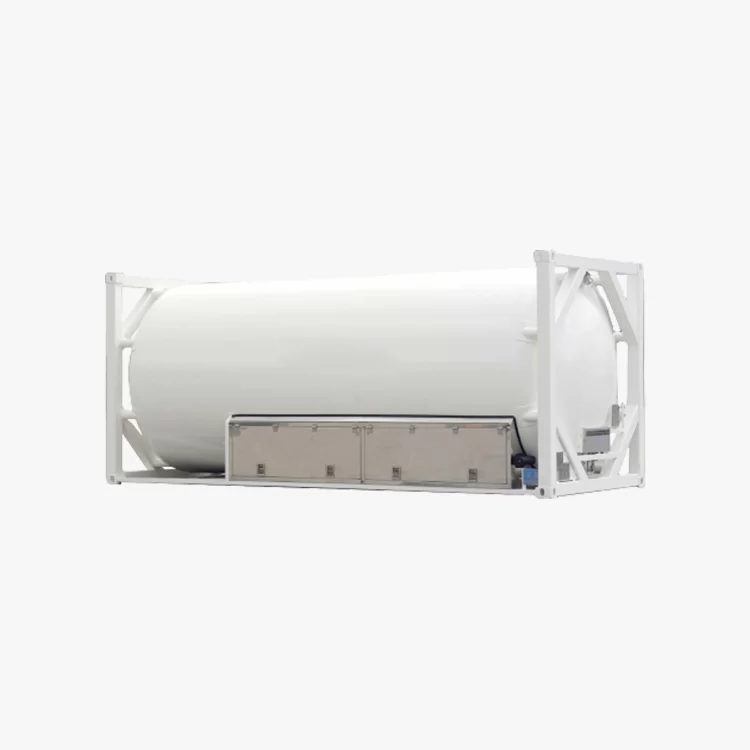
ISO Chemical Tank
An ISO chemical tank is a type of tank container that is designed and built to transport various types of hazardous and non-hazardous chemicals. These tanks are constructed in compliance with the International Organization for Standardization (ISO) standards, which ensure that the tanks are safe, reliable, and compatible with a range of transportation modes.
ISO chemical tanks are typically made of stainless steel, which provides excellent resistance to corrosion and can withstand high pressure and temperature changes. The tanks are equipped with various safety features, such as pressure relief valves, emergency venting systems, and spill containment systems, to ensure the safe transport of hazardous chemicals. The tanks also have specialized linings and coatings to protect the cargo from contamination and to prevent the tank from corroding or eroding over time.
ISO chemical tanks are commonly used in the chemical industry for the transportation of acids, alkalis, solvents, and other hazardous chemicals. They are also used in the food and beverage industry for the transport of edible oils, juices, and other liquids.
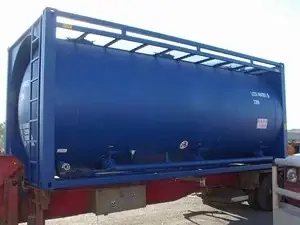
ISO Liquid Tank (T11)
An ISO liquid tank (T11) is a type of tank container that is specifically designed and constructed for the transportation of non-hazardous liquid chemicals, such as food-grade products, water, and certain types of fuels. They are also used in the pharmaceutical industry for the transport of certain types of drugs and other medical products.
These tanks are built by the International Organization for Standardization (ISO) standards, which ensure that the tanks meet certain safety and quality requirements for international transport. The T11 designation refers to the tank’s compliance with ISO standard 1496/3, which specifies the dimensions, design, and testing requirements for tank containers.
ISO liquid tanks are designed with several features to ensure the safe transport of liquid chemicals, including pressure relief valves, emergency venting systems, and spill containment systems. They also have specialized linings and coatings to prevent contamination and protect the tank from corrosion and erosion over time.
Specifications:
Max Gross Weight: 79,366 lbs
Tare Weight: 8,068 lbs
Net Weight: 71,297 lbs
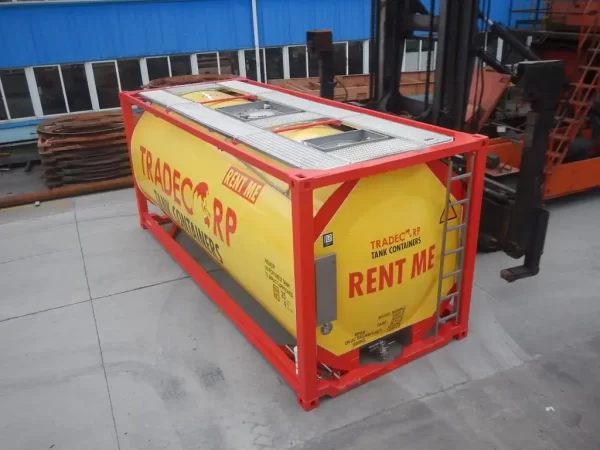
ISO Offshore DNV Tank
An ISO Offshore DNV Tank is a type of shipping container that is specifically designed for offshore use in the oil and gas industry. These tanks are designed and certified following the International Organization for Standardization (ISO) standards and the Det Norske Veritas (DNV) rules for offshore containers.
ISO Offshore DNV Tanks are typically used to transport oil, chemicals, and other hazardous or non-hazardous substances in offshore drilling, production, and exploration operations. They are made from high-strength steel and are designed to withstand harsh marine environments, including high waves, wind, and corrosive saltwater.
The ISO Offshore DNV Tank is equipped with various safety features such as a pressure relief valve, emergency shut-off valve, and a spill containment system to prevent any hazardous situations. These tanks are used to transport and store various types of liquids and gasses, including crude oil, natural gas, and chemicals, offshore on oil platforms, and drilling rigs.
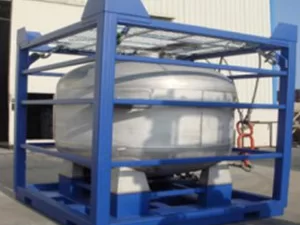
ISO Pneumatic Tank Container
ISO Pneumatic Tank, also known as cement tank container or oxygen tank, refers to a type of tank container used for transporting bulk materials such as dry powders, granules, and pellets that are pneumatically conveyed. These tanks are designed to meet the International Organization for Standardization (ISO) standards and are commonly used in the chemical, food, and construction industries. The tanks are designed to be easy to clean and maintain, and they are suitable for use in a wide range of environmental conditions.
The container is equipped with an air compressor and a series of air hoses and valves that create compressed air to fill and discharge the container. The container’s pneumatic system provides a safe and efficient way to load and unload dry bulk materials without the need for mechanical equipment or manual labor. ISO Pneumatic Tanks are widely used in the construction and industrial sectors where the efficient transportation of dry bulk materials is essential.
Specification:
External dimensions: L 20’ x W 8’ x H 8’6”
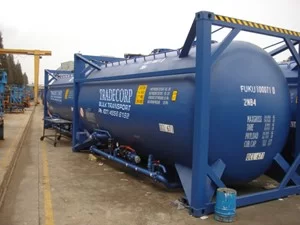
T6 Dangerous Liquid Tank
A Dangerous Liquid Tank, also known as a hazardous liquid tank or chemical tank, is a specialized container designed to transport and store hazardous liquids safely. Dangerous Liquid Tanks come in various sizes, shapes, and materials, depending on the type of hazardous liquid being transported or stored. They are typically made of stainless steel, carbon steel, or aluminum, and are equipped with safety features such as pressure relief valves, venting systems, and emergency shut-off valves.
The tanks are classified according to the type of hazardous liquid they are designed to carry, and there are several categories of dangerous liquids, including flammable liquids, corrosive liquids, toxic liquids, and explosive liquids. The transportation of Dangerous Liquid Tanks is highly regulated, and strict safety protocols must be followed during loading, unloading, and transportation. The tanks must be labeled and identified with the appropriate hazard class and UN number, and the driver and transport company must have the necessary certifications and licenses to handle hazardous materials.
Tradecorp T6 Dangerous Liquid Tank Specifications:
Max Gross Weight: 36.000 kg
Tare Weight: 3.850 kg
Capacity: 24.000 l
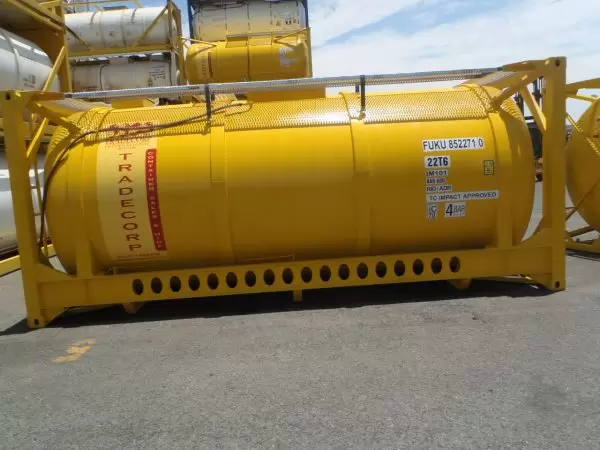
Purchasing a Conex Box
The different types of ISO tank containers each have unique features and specifications designed to meet specific transport needs. From standard tank containers for non-hazardous liquids to offshore tank containers for bulk liquid transport in offshore environments, ISO tank containers are a versatile and cost-effective solution for the safe and efficient transport of bulk liquids. By understanding the different types of ISO tank containers and their uses, you can choose the right container to meet your specific transport needs and ensure the safe and efficient transportation of bulk liquids.
Tradecorp has a wide range of customization options for shipping containers for sale. We will help you find the perfect container solution for your business or project needs. Find a variety of types and sizes of shipping containers, from standard ones to tanks, and customizable ones. We will have them ready for you at the best price. Fill out the contact form on our page and we will respond to your inquiry promptly.

